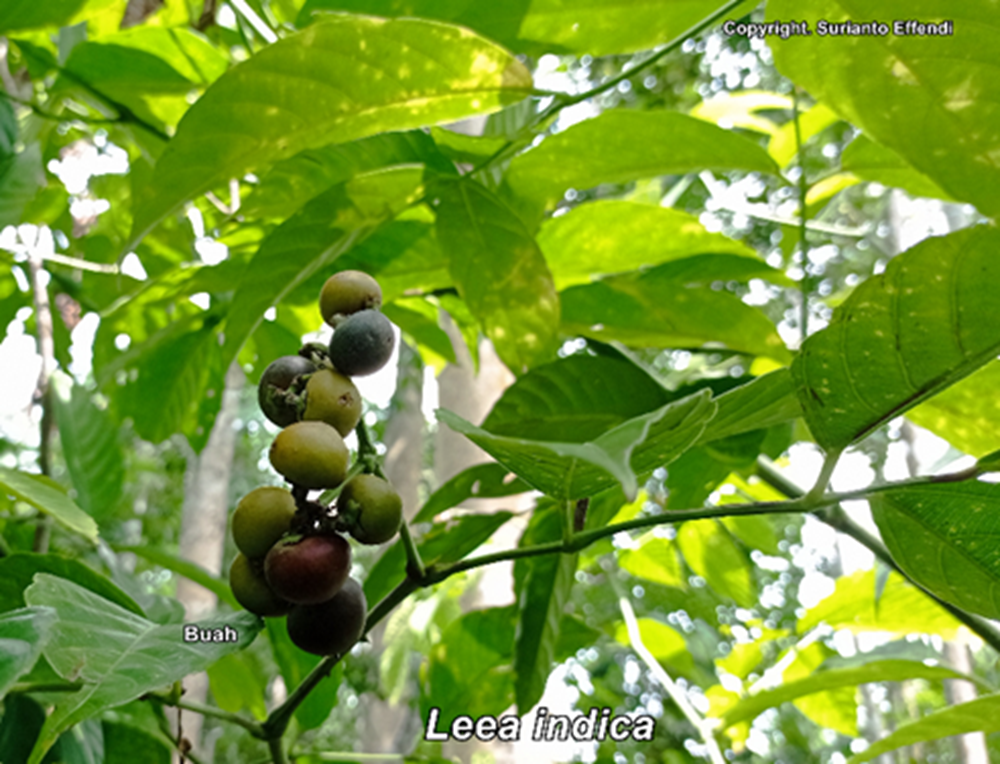Leea indica
(Burm.f.) Merr.
Vitaceae
Nama : Mali-mali.
Deskripsi : Perdu, pohon kecil, tinggi 2−15 m, diameter batang 2−10 cm. Batang muda licin, batang dewasa aga kasar, terkadang berduri tajam; hijau terang sampai keabu-abuan. Daun majemuk, menyirip rangkap 2−3, helai anak daun berjumlah 7−ꚙ; jorong−lonjong−membundar telur; pangkal anak daun membundar; ujung anak daun meruncing sampai berujung majal; tepi daun mengergaji; biasanya permukaan gundul, kehijauan sampai hampir kecoklatan terang pada daun muda. Perbungaan malai, terminal atau aksiler, panjang 10−25 (paling panjang 40) cm; daun kelopak bercuping berkelipatan-5, kehijauan, mahkota berkelipatan-5, putih sedikit kehijauan muda di bagian basal. Bakal buah bersel-6 (4−8), putik 1−1.5 mm. Buah buni, bulat, diameter 5−10 mm, hijau saat muda, ungu tua saat matang. Biji kecoklatan.
Ekologi : Persebaran sangat luas dari wilayah Asia beriklim sedang sampai Asia tropis, termasuk wilayah Malesia. Indonesia tersebar dari Sumatra, Jawa, Kalimantan, Sulawesi, Maluku, Sunda Kecil, dan Papua. Pada umumnya tumbuh di bawah kanopi hutan primer dan sekunder. Hutan dataran rendah sampai punggung perbukitan dan di atas batuan kapur. Referensi: Chen et al., 2007.
Kegunaan : –

